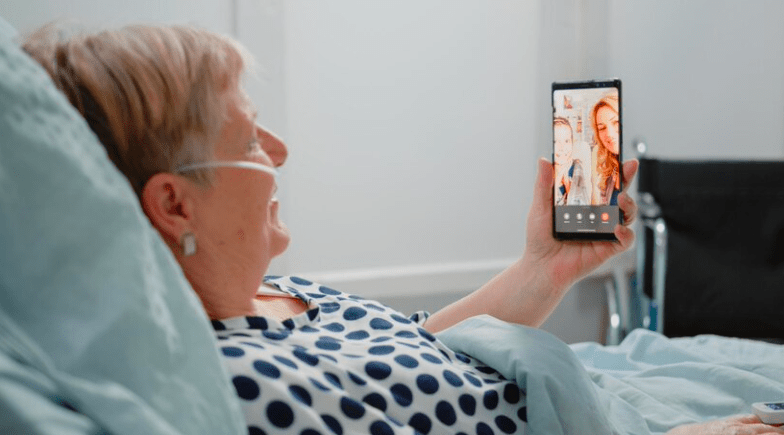- What is a virtual ward or hospital at home service? A virtual ward, or hospital at home service, is a healthcare model that provides medical care and monitoring to patients in their own homes instead of traditional hospital settings. It utilises advanced technologies to offer a range of medical services remotely.
- How does a virtual ward work? In a virtual ward, patients receive medical attention through telemedicine, remote monitoring devices, and digital communication tools. Healthcare professionals can monitor vital signs, provide consultations, adjust treatment plans, and offer support without requiring patients to be physically present in a hospital.
- What kind of conditions can be treated in a virtual ward? Virtual wards can manage a wide range of medical conditions, including acute illnesses, chronic diseases, post-operative recovery, wound care, and more. However, the suitability of a patient for virtual care depends on the severity of their condition and the necessary level of medical intervention.
- Is virtual care as effective as traditional hospital care? Virtual wards have been shown to be effective in various studies, especially for certain conditions. They can reduce hospital readmissions, improve patient satisfaction, and offer convenience. However, the effectiveness might vary based on the condition being treated and the technology infrastructure available.
- What technology is used in virtual wards? Virtual wards utilise telemedicine platforms, video conferencing tools, wearable devices (such as heart rate monitors, blood pressure cuffs), and mobile apps for communication and remote monitoring. These technologies facilitate real-time interaction between patients and healthcare providers.
- Are virtual wards safe and secure? Yes, virtual wards prioritise patient privacy and data security. Healthcare providers adhere to strict guidelines and regulations to ensure that patient health information remains confidential and secure during virtual interactions.
- Do I need special equipment for virtual ward care? Depending on the virtual ward setup, patients might need access to a computer, smartphone, or tablet with a stable internet connection. Some services also provide wearable devices for tracking vital signs and other health metrics.
- Can virtual ward care replace traditional hospital care entirely? Virtual wards are not meant to replace all traditional hospital care, but they can be an alternative for many patients, particularly those with mild to moderate conditions. Severely ill patients or those requiring complex medical interventions might still need in-person hospital care.
- How do I access a virtual ward or hospital at home service? Access to a virtual ward typically requires a referral from a healthcare provider. Once enrolled, patients will receive instructions on how to set up virtual consultations, use monitoring devices, and engage with the healthcare team.
- Will my insurance cover virtual ward services? Coverage for virtual ward services can vary depending on your insurance plan and local regulations. It’s important to check with your insurance provider to understand the extent of coverage for virtual care.
- Can I communicate with my doctor/nurse whenever I need to? Virtual wards usually provide a communication channel for patients to contact their healthcare providers during specified hours. Some services might also offer after-hours support for urgent concerns.
- What happens if my condition worsens while in a virtual ward? Virtual wards have protocols in place for handling worsening conditions. If a patient’s health deteriorates, the healthcare team will guide them on the appropriate steps to take, which might include transitioning to in-person care if necessary.
If you’d like to learn more about our virtual ward and care home software solutions, please book a call with our team


Recent Comments